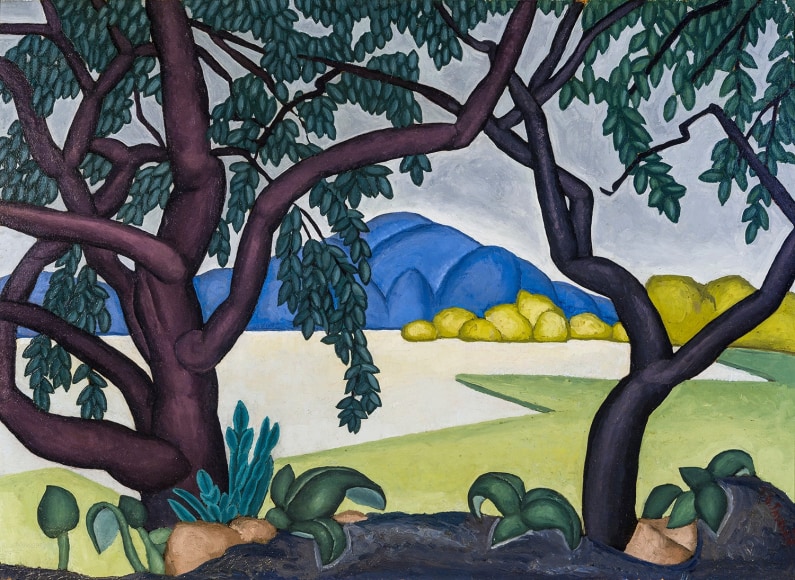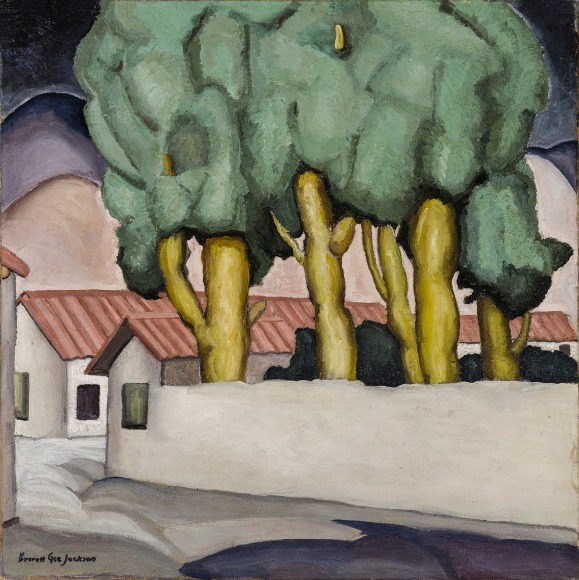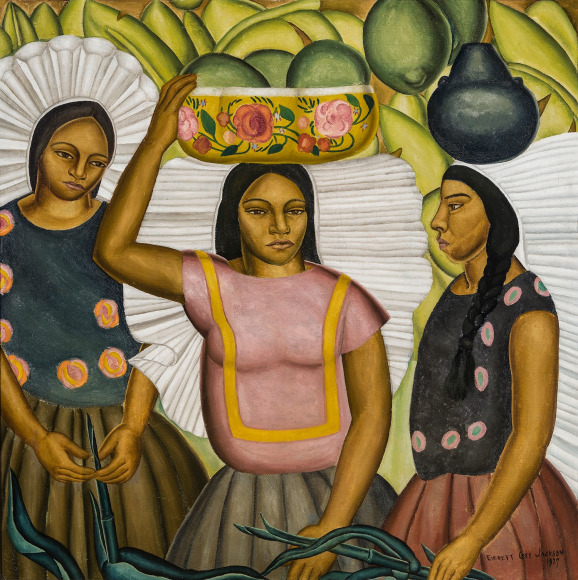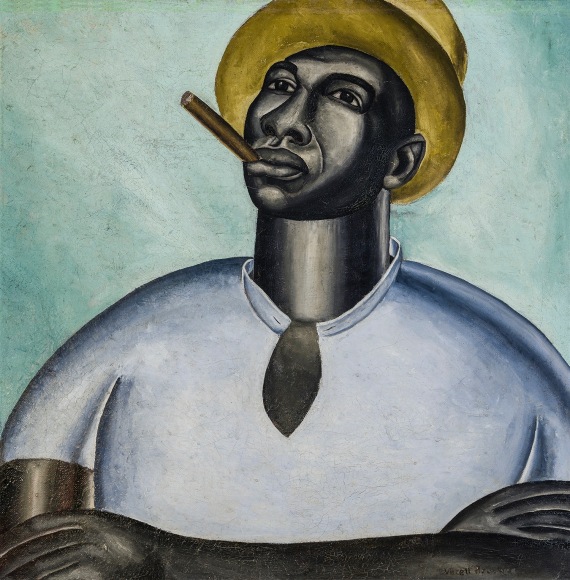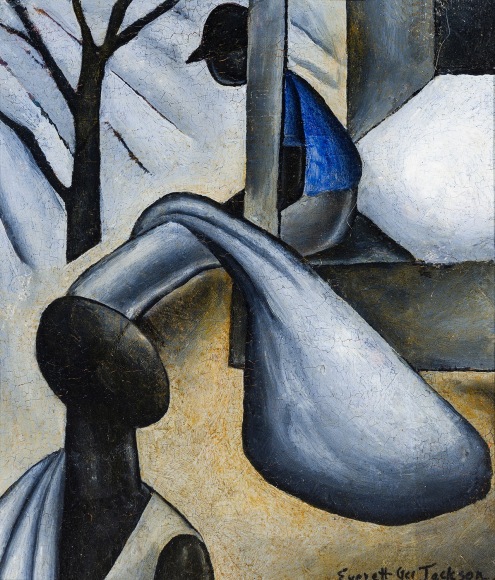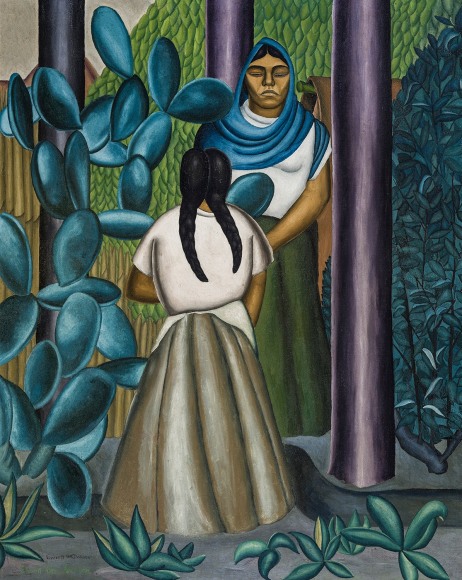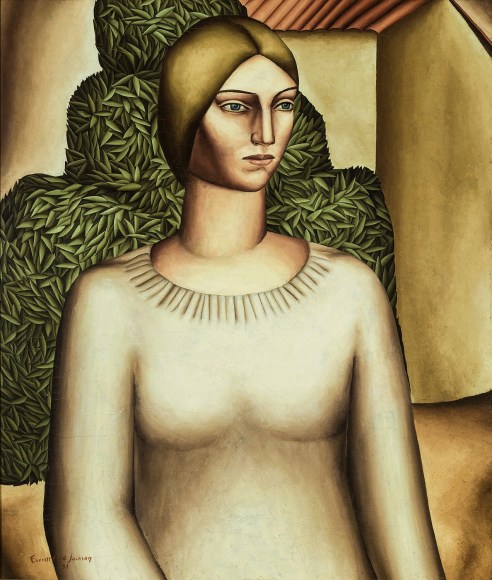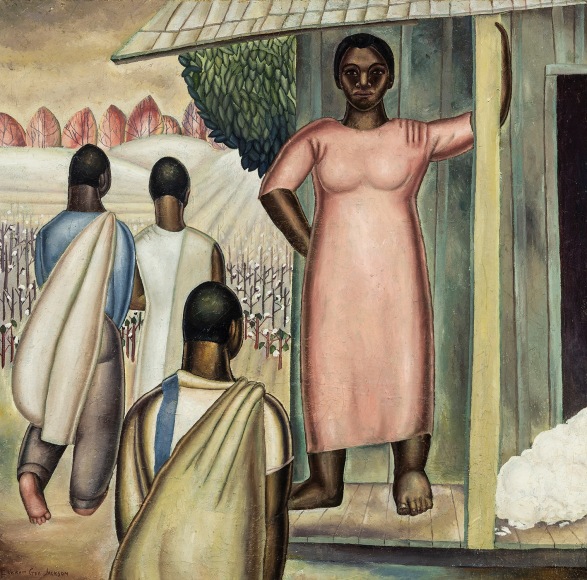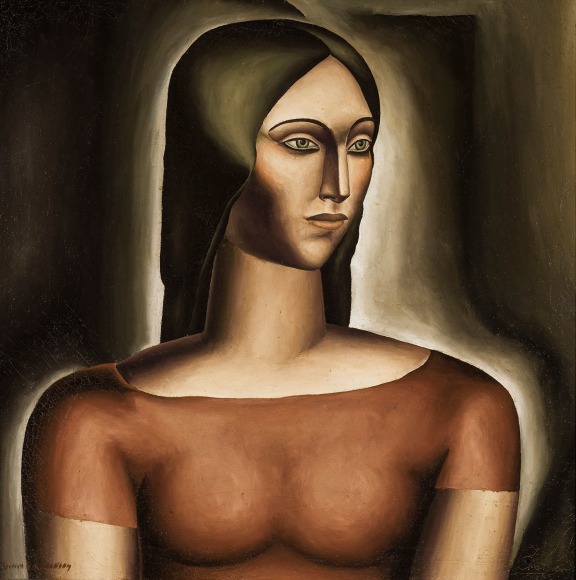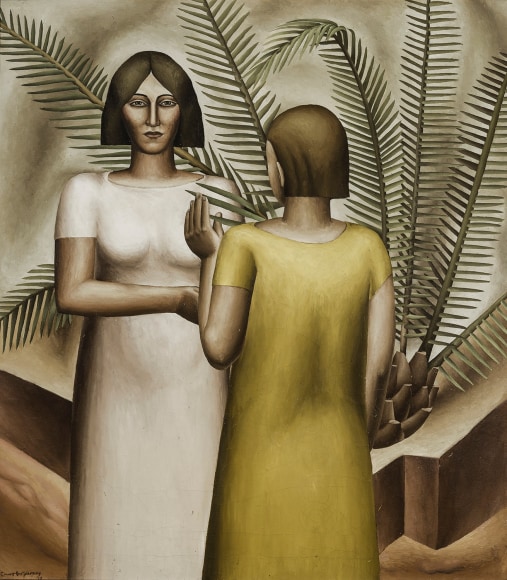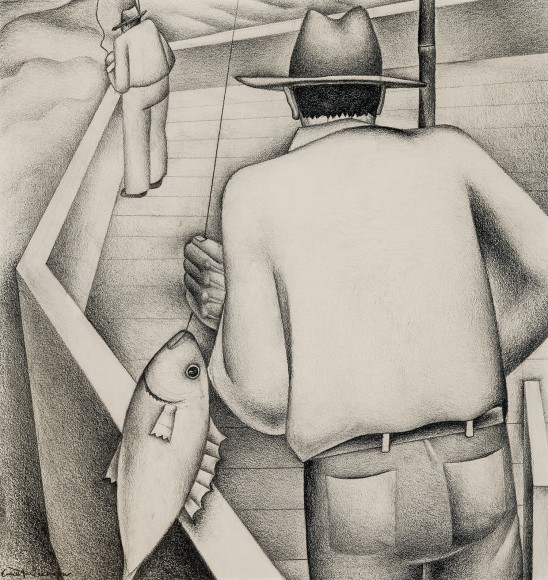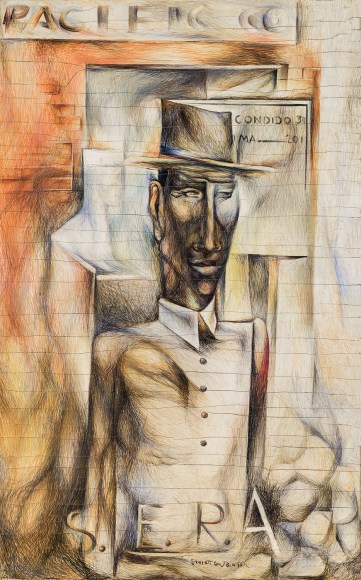In September 1930, Everett Gee Jackson published a short treatise on modern art. In “Modernism Without Apologies,” Jackson noted:
Form is the material of modernists.... It is the contention of the modernist that, by the arrangement of forms, colors and lines considered abstractly, one may possibly express objectively his emotional reaction to experiences with nature.
Jackson’s own path to modernism was steered and accelerated by a 1923 student visit to Guadalajara, Mexico. With its unique blend of ancient and Old World cultures, and vibrant contemporary mural painting movement, Mexico captivated Jackson. The young artist spent the next four years, on and off, traveling through the Mexican countryside and voraciously drawing inspiration from the work of Diego Rivera, José Clemente Orozco, David Siqueiros, and other artists of the Syndicate of Technical Workers, Painters and Sculptors.
Under the influence of the Mexican muralists, Jackson’s paintings quickly broke free from the constraints of decorative impressionism and morphed into sculptural dimensionality. Jackson’s figures suddenly had tangible form, the same rounded solidity seen in Rivera and Siqueiros. His best figure paintings, such as the brilliant Tehuantepec Women (1927), painted in Texas from studies made in Oaxaca state while recuperating from a bout with malaria, clearly show Jackson’s indebtedness to the Syndicate muralists. The rounded figures of three indigenous women are contrasted by flat, fluted patterns flowing against a golden background of tropical foliage. Mural-like in its effect, Tehuantepec Women is a capstone to Jackson’s career-altering years in Mexico.
Everett Gee Jackson was born in the East Texas town of Mexia. He enrolled in the architecture program of Texas A & M, but after showing a natural aptitude for drawing, transferred to the Art Institute of Chicago, where he learned to paint in the ascendant style of Impressionism. Jackson returned to Texas to paint professionally, but in 1923 determined to continue his art studies in southern California at the San Diego Academy of Fine Art, where he met a local girl, Eileen Dwyer, whom he married three years later.
In 1927, after four years in Mexico, Jackson settled in San Diego with his new wife. He accepted a faculty position at San Diego State College (now, San Diego University; Jackson was ultimately appointed chairman of its art department) and, together with Eileen, who was a widely published journalist and art critic, assumed a place at the center of the city’s cultural life, a role that he maintained well into the postwar years. In 1984, Jackson’s work and position in the community was fêted at the San Diego Museum of Art by an aptly named exhibition, Everett Gee Jackson: Dean of San Diego Painters. In 2008, the Museum reprised and expanded its celebration of its local art celebrity with Everett Gee Jackson: San Diego Modern.
Hirschl & Adler’s exhibition, Everett Gee Jackson: “Modernism Without Apologies” includes 20 figure paintings and landscapes from Jackson’s years in Texas, Mexico, and San Diego. A common DNA links most of the paintings in the exhibition to the distinctive modernism spawned in 1920s Mexico City. Jackson was a conduit; he imported the Mexican avant-garde and applied it to homegrown subjects from East Texas to Southern California. East Texas personalities such as Big Jim (c. 1927), and San Diego subjects as The Fishing Barge (c. 1933) received Jackson’s adopted solidity. Contemporary art critics aptly characterized his style as “sturdy modernism,” and sturdy is the sum total of Big Jim’s broad chest, round shoulders, and chiseled features.
“Modernism Without Apologies” also includes S.E.R.A. (1934) and Embarkation (1938), two San Diego works from later in the 1930s. These are composed in more angular style, reminiscent of precisionism. In Embarkation, one of the most moving paintings in the exhibition, sailors with heavy duffels board a warship, under the shadow of its menacing deck guns. Their downturned heads are invisible, only hinted at by the white rectangles of their sailor caps, their individuality and identity suppressed by their military service. They become instruments of war, as mechanized as the deck guns above them.

